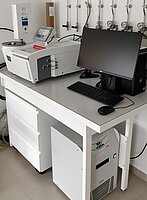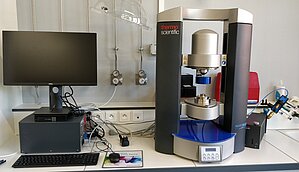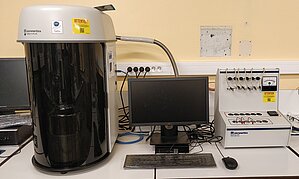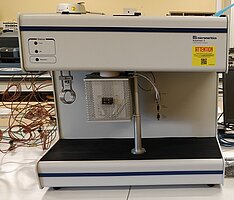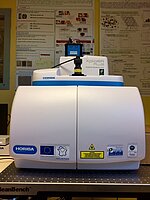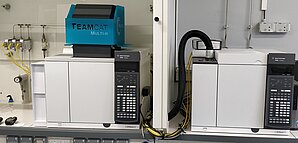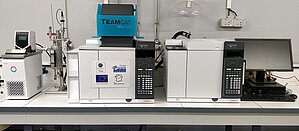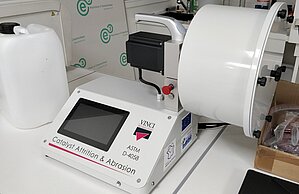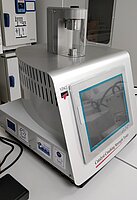Quality control equipments installed
The equipment presented below under installed and functional. They make it possible to characterize the physicochemical properties of the catalysts and supports prepared, in combination with other methods available via the advanced characterization platforms of IMEC.
A rheometer
The HAAKE MARS 40 rheometer from Thermo Fisher is equipped with plane and cone heating by Peltier effect (-80 to 400 ° C). Two geometries are available, depending on the properties of the suspensions: a plane-plane, and a 2 ° -plane cone. Everything is controlled by proprietary software.
A nitrogen physisorption apparatus
This device, a Tristar II PLUS from Micromeritics, coupled with a VacPrep vacuum degassing station, can determine the specific surface area, the pore size distribution and the pore volumes of microporous and mesoporous materials. Up to three samples can be measured simultaneously. The included proprietary software incorporates a method for assessing pore size distribution by NLDFT, which is particularly useful for microporous materials.
A surface analyzer
Autochem II 2920 from Micromeritics allows the fine analysis of the surface properties, and in particular of the redox properties of catalytic materials. Capable of rising up to 1100 ° C, it is capable of carrying out temperature-programmed reductions (TPR) and oxidations (TPO), as well as desorptions of species (TPD, for example of ammonia). This data can then be used to determine the strength and surface distribution of the active phases, or the acidity of the material.
A high-throughput catalytic screening test for CO oxidation
UPCAT has a MULTI-R from TeamCat, a catalytic screening device with 4 reactors in parallel which can go up to 400 ° C (precision +/- 0.1 ° C) and 7 bar. The apparatus is coupled with a gas chromatography apparatus having an FID detector, making it possible to analyze the gaseous effluents directly, and therefore to go back to the catalytic activity of the materials. Everything is controlled by proprietary software, which also allows the recording of all process parameters. The amount of catalyst typically required is 200 mg per test and per reactor.
A compressive strength test
The Versatile Crushing Strength Tester from Vinci Technologies is used to evaluate the compressive strength of grains, extrudates, or catalyst beds (approximately 50 mL). The force transducer has a maximum sensitivity of 60 N, which makes it more suitable for porous materials than for dense materials.
Proprietary software controls the test and enables data recording and exporting.




